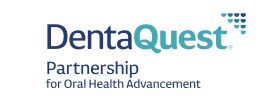The administration of Pennsylvania Governor Wolf released frequently asked questions for restaurant owners to reference following the newly announced self-certification process.
This new process, Open & Certified Pennsylvania, ensures that customers and employees know that they can dine safely at restaurants committed to strictly complying with all public health safety guidelines and orders as we work to mitigate the spread of COVID-19 in the commonwealth.
“The novel coronavirus has created new challenges for Pennsylvania businesses, and it is critical that we provide avenues of support for our restaurants, which have been disproportionately impacted,” Department of Community and Economic Development Secretary Dennis Davin.
“Open & Certified Pennsylvania will instill consumer faith and allow our small businesses to recover more quickly, and we want to make the process as simple and easy as possible. The list of frequently asked questions we are releasing today will help ensure that this transition goes as smoothly as possible for Pennsylvania businesses.”
Any restaurant that wishes to increase to 50 percent indoor capacity on September 21 must complete the online self-certification process by October 5.
Restaurant owners with additional questions about the self-certification program can contact covidselfcert@pa.gov.

